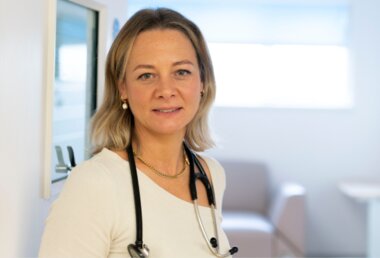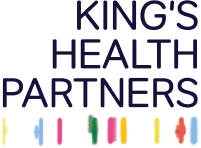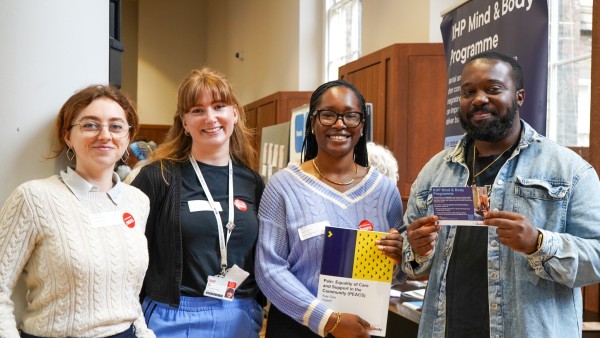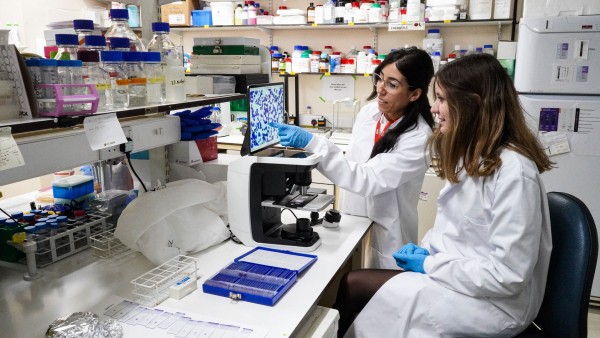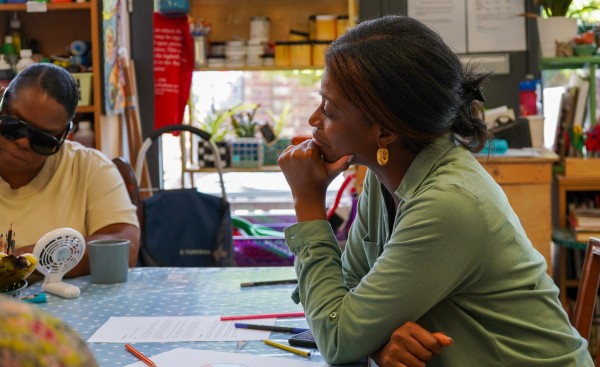24 April 2024
Sleep expert Dr Alanna Hare, Royal Brompton and Harefield Hospitals, tells KHP News about a new trial aimed at improving the diagnosis of sleep apnoea in people with learning disabilities.
What is sleep apnoea?
Sleep apnoea is a narrowing of the upper airway in sleep. When this happens, the flow of air in and out through the upper airway is either reduced or can stop completely for a few seconds, dropping the oxygen level in the blood and disrupting sleep. Sleep apnoea can affect things like behaviour, concentration, mood, and alertness - and significantly impact the ability to manage activities like schooling. If undiagnosed and untreated it can lead to an increased risk of cardiovascular disease.
Individuals with Down syndrome are more likely to have sleep apnoea than the general population. Studies have suggested 53% to 76% of children with Down syndrome have sleep apnoea compared to 1% to 4% of the rest of the population. This may be due to differences in facial structure. Often they are unable to articulate the problems that they’re having in terms of daytime sleepiness or concentration and mood. And sometimes those daytime consequences might be attributed to their learning disability or other health issues.
A further challenge in this group of individuals is that even if you do identify a potential sleep breathing disorder, it can be challenging to obtain quality diagnostics as sleep study equipment can be poorly tolerated.
Please explain the trial
Dr David O’Regan, a consultant psychiatrist and sleep specialist at Guy’s Hospital, recognised this was a significant issue in this group of patients whom he sees in his clinics. He suspected that there are many individuals with learning disabilities who have undiagnosed and untreated sleep apnoea, or other sleep related breathing disorders. He was aware that this population is already under researched and experience a wide range of healthcare inequalities. He felt that being unable to perform good quality diagnostic sleep studies, in particular for sleep apnoea, was likely to be further contributing to these healthcare inequalities.
At the same time, Prof Joerg Steier had been working with a new and much less intrusive diagnostic device worn at night, the AcuPebble device, which is a validated tool for the diagnosis of sleep apnoea in both adults and children. This is a small device that is light and fairly unobtrusive. The device sits over the larynx and uses acoustics to identify the presence of episodes of what's called apnoea or hypopnea, which are pauses or cessation of breathing flow.
Driven by the need to better cater for these individuals and working together with myself and our specialist fellows, Dr Mohammad Abdusalam and Dr Lachlan Stranks, we hoped that the Acupebble device would be better tolerated than conventional diagnostic equipment and would help us diagnose sleep apnoea in individuals with learning disabilities.
We have identified patients with learning disabilities both here at the Royal Brompton Hospital, and at Guy’s and St Thomas' Hospitals. These are individuals who had previously attempted sleep studies by conventional means, but either had not tolerated them, or we had not got a confirmed diagnosis because the quality of the data was poor. We have used the AcuPebble device for diagnostics, which is undertaken in the patient’s home.
We have collected data on the tolerance of the device, the quality of the data obtained, as well as qualitative feedback from individuals, carers, and family members about the use of the device.
All the patients who completed the study preferred the AcuPebble device to conventional sleep studies, and found it was comfortable and easy to use. And we were able to get sufficient quality data to confirm or refute the diagnosis of sleep apnoea. We have got a small cohort so far and have submitted our initial data to the European Respiratory Society Conference, for later this year.
Our initial data is showing is that this is a viable alternative to conventional sleep study equipment for individuals in a potentially under investigated and undertreated group. We hope this will enable us to make a diagnosis more rapidly and then move forward with treatment.
How would you treat sleep apnoea once you've been diagnosed?
Generally in this population, we would offer CPAP (continuous positive airway pressure) therapy as a first line. A small mask is placed over the nose, or the nose and mouth, which blows air at pressure into the upper airway to hold it open. However, sometimes we do find that individuals with learning disabilities find this difficult to tolerate.
There are other treatment options available, like mandibular advancement splints, which is a mouth guard that pulls the bottom jaw forward in sleep, so a little bit less intrusive. Weight loss is also often very important. And at Guy’s and St Thomas’ NHS FT we have the option to consider some individuals for hypoglossal nerve stimulation, if they meet particular parameters. This can be helpful for those individuals who are unable to tolerate CPAP therapy.
What's the next step?
We've got through a small number of patients and we are still recruiting so there is more data to collect. Hopefully, the abstract we've submitted to the European Respiratory Society Congress will be accepted and we’ll be able to present this work internationally. We will also be looking at opportunities to submit this nationally - we've got the British Thoracic Society summer meeting coming up in June and the winter meeting in November.
So, I think we'd like to look at completing a wider number of patients, and then present this locally, nationally and internationally. Hopefully this will improve access to diagnosis and treatment in a group of individuals who are at risk of healthcare inequality.
__________
Dr Hare is a consultant in sleep and ventilation at Royal Brompton Hospital, with responsibility for specialist clinics in sleep disorders and domiciliary ventilation. She is President of the British Sleep Society and Treasurer of the British Thoracic Society, sitting on their Board. She has authored the National Sleep Outpatient Pathway on behalf of NHS England and Getting It Right First Time (GIRFT). For more information, visit her webpage here.
